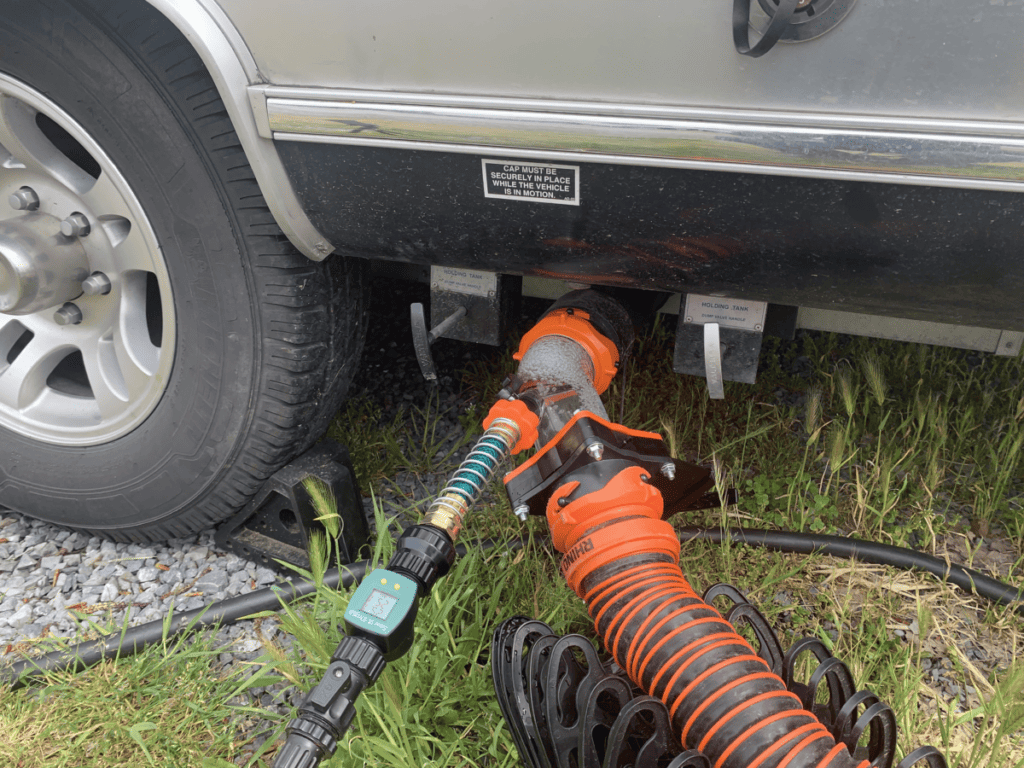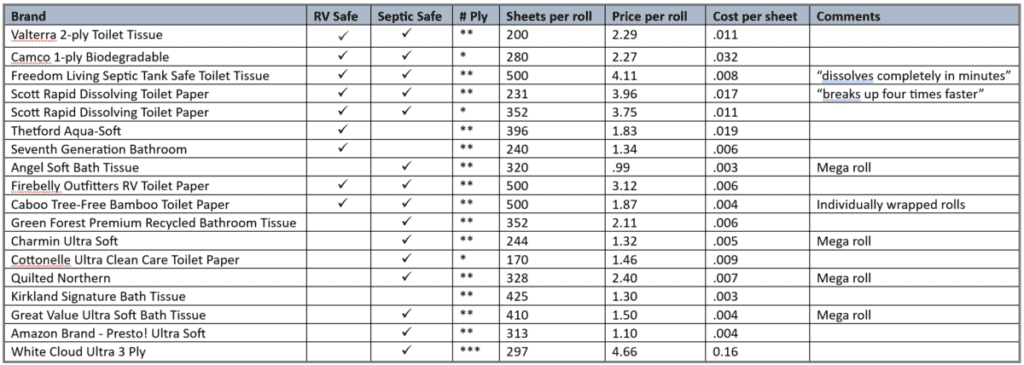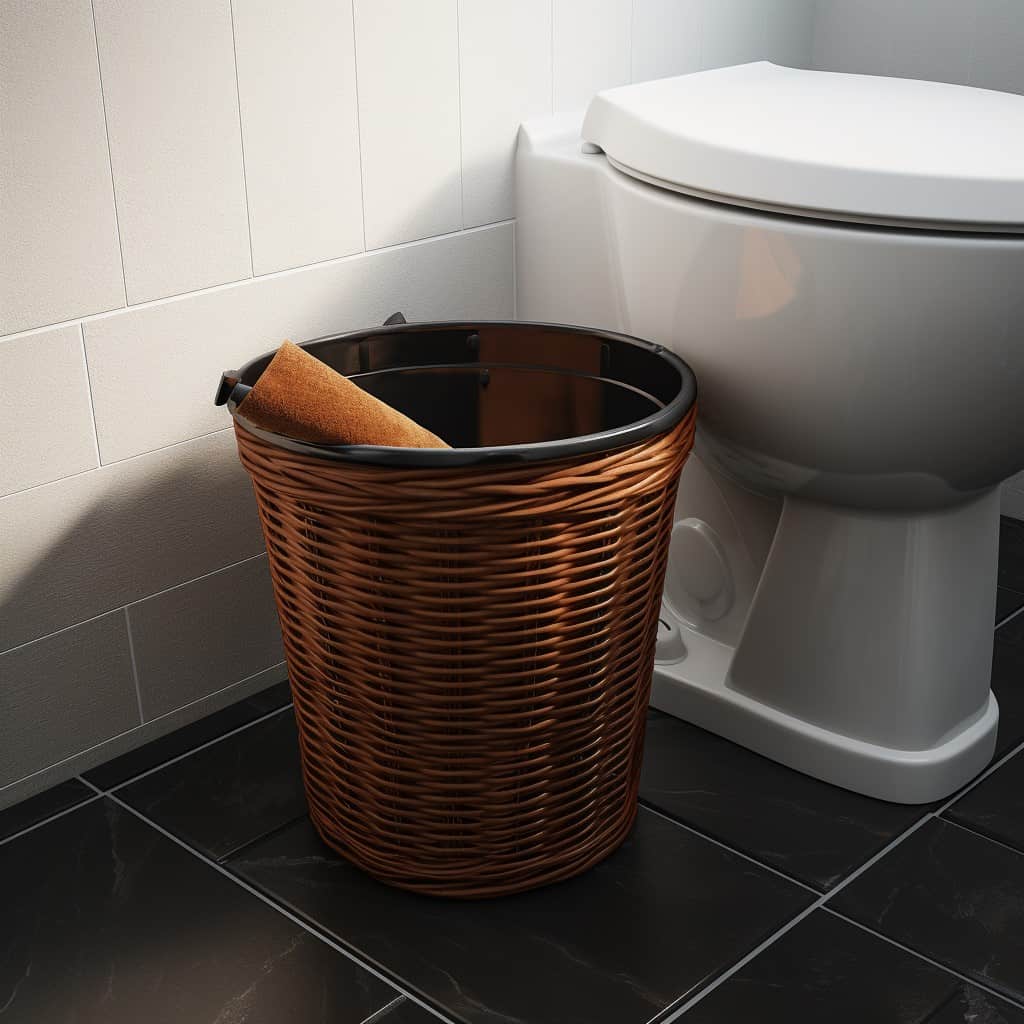
Before you go, check this out!
We have lots more on the site to show you. You've only seen one page. Check out this post which is one of the most popular of all time.
We decided to go on an RV trip, our first one, and took deep dives into everything we needed to know about it. We started to learn how to plan an RV trip, learned what to expect from the RV we rented, and learned about the less glamorous parts of the experience.

While the RV rental company provided the sewer connections and walked us through the process, it was up to us to buy the correct toilet paper. It had to be appropriate for use in the RV, it was going to be expensive, and nothing else would work.
Well, that’s what we were told.
Today, there is a lot of chatter about RV specific toilet paper and why it is important. But what I’ve learned over time and over thousands of miles is that there seems to be a significant population within the RVing community that believes RV toilet paper is not required.
RV toilet paper is a quick-dissolving toilet paper specifically designed for use in RVs, boats, and portable toilets. It is septic-safe, can be highly absorbent, soft, and is quick-dissolving. RV toilet paper is less likely to cause a clog in the plumbing system or to interfere with tank sensors. RV toilet paper is biodegradable and environmentally friendly. When disposed of in a cat hole, it is suitable for use in natural settings and aligns with the principles of Leave-No-Trace.
Now that we know what it is, let’s look at why it is recommended for use in RVs, its relative cost, and alternatives to RV toilet paper.
RV toilet paper is recommended, but not absolutely required. Manufacturers recommend RV toilet paper because the water volume, flushing mechanism, and sewage system design cause an RV’s plumbing to operate differently than regular household toilets.
RVs carry a limited amount of water in a fresh water tank and they have black water tanks with limited capacity to catch the waste. Human waste and toilet paper must move through the system with less water, so RV toilet paper is designed to break down more easily than toilet paper commonly used in the home.
Household toilets start to move waste through the system with a pressurized flush, but RV toilets rely on gravity. Toilet paper must dissolve more rapidly to quickly and easily to move through the system.
An RVs sewage system is relatively simple. Space and weight constraints dictate the use of smaller pipes and holding tanks, so rapidly dissolving toilet paper is needed to reduce the risk of clogging. Also, sensors in the black tank alert users as the tanks fill, and rapidly dissolving toilet paper mitigates the risk of sensors being compromised by clinging debris.
The RV plumbing system benefits from a product that breaks down and moves more easily through the pipes. Quickly dissolving RV toilet paper reduces the risk of clogging and my keep tank sensor readings more reliable.
In a comparison of eighteen different brands of toilet paper, “RV Safe” toilet paper cost on average $2.73 per roll while toilet paper labeled only as “Septic-safe” cost on average $1.98. So, in this comparison, RV Safe toilet paper cost on average 37% more.

I ran an experiment to see how fast three different toilet paper brands dissolved in water. After five days, Scott Rapid Dissolving Toilet Paper for RVs and Boats was broken a little more than the others. I have not yet tested Freedom Living Septic Tank Safe Toilet Tissue, but the claim, “dissolves completely in minutes” is curious.
Alternatives to RV toilet paper include septic-safe toilet paper, a waste basket, and an RV bidet.
RVs have holding tanks, not septic tanks.
Septic tanks break down waste slowly, separate waste into liquids and solids, and leaches the effluent into a drain field. Holding tanks store waste until disposal.
In the RV community, some argue that dissolving waste as you would in a septic system leaves a residue on the inside of the black tank making it more difficult to clean and compromising sensor reliability. They argue that if waste is not broken down, it will move through the system more completely and without leaving as much residue.
If that argument is true, RV-specific toilet paper is not required and septic-safe toilet paper is a viable alternative because like RV safe toilet paper, it is designed to soften and break down quickly. Reports by other RVers and my own experience show that septic-safe toilet paper can be used successfully over long periods of time.
Also, consider for a moment that clogging the plumbing system is a risk with both RV safe and septic-safe toilet paper. If you use too much paper and not enough water, you increase the chance of clogging the system with either type of tissue.
RVers can avoid flushing toilet paper into the system by depositing toilet paper inside a covered waste basket. If that method is used, then the paper options are nearly endless.

Bidets use water to clean, so the need for toilet paper is reduced. You can use a smaller amount of paper or washable cloth to dry, reducing the risk of clogging the plumbing system. In addition to reducing the need for toilet paper, bidets can be more comfortable and hygienic. However, they need to be installed by someone with the skills to do it correctly and they may not be an option for all RVers.
While RV toilet paper breaks down quickly and easily, many RVers use septic-safe toilet paper for long periods of time with no issue. Septic-safe tissue is also less expensive than brands labeled RV Safe.
Remember, too, that the amount of paper used and the amount of water used can make a difference in preventing clogs and other plumbing issues. While manufacturers recommend using RV-safe toilet paper, septic-safe toilet paper is a viable alternative for those who prefer it.
Ultimately, it is up to each of us to decide which type of toilet paper to use based on our personal preferences and experiences. I hope that this article answered your questions about RV toilet paper and will help you make an informed decision.
For more tips, read our latest blog post on how to empty a composting toilet. Find it here.
Safe travels!
NomadicNeighborhood is a participant in the Amazon Services LLC Associates Program, an affiliate advertising program designed to provide a means for sites to earn advertising fees by advertising and linking to Amazon.com. We also participate in other affiliate programs which compensate us for referring traffic.
How to Empty a Composting Toilet: Legal considerations and more
Composting toilets divert liquid and solid waste into separate tanks, and each must be emptied independently. Liquid waste is dumped into dump stations, vault toilets, or flush toilets. Solid...
Empty a Black Tank: 16 Steps That Include a Test and Preconditioning
[wpcode id="2133"] When I first started RVing, it took me close to an hour to empty the black and gray tank. I was learning and didn’t want to make a mess, so I took my time. As I gained more...